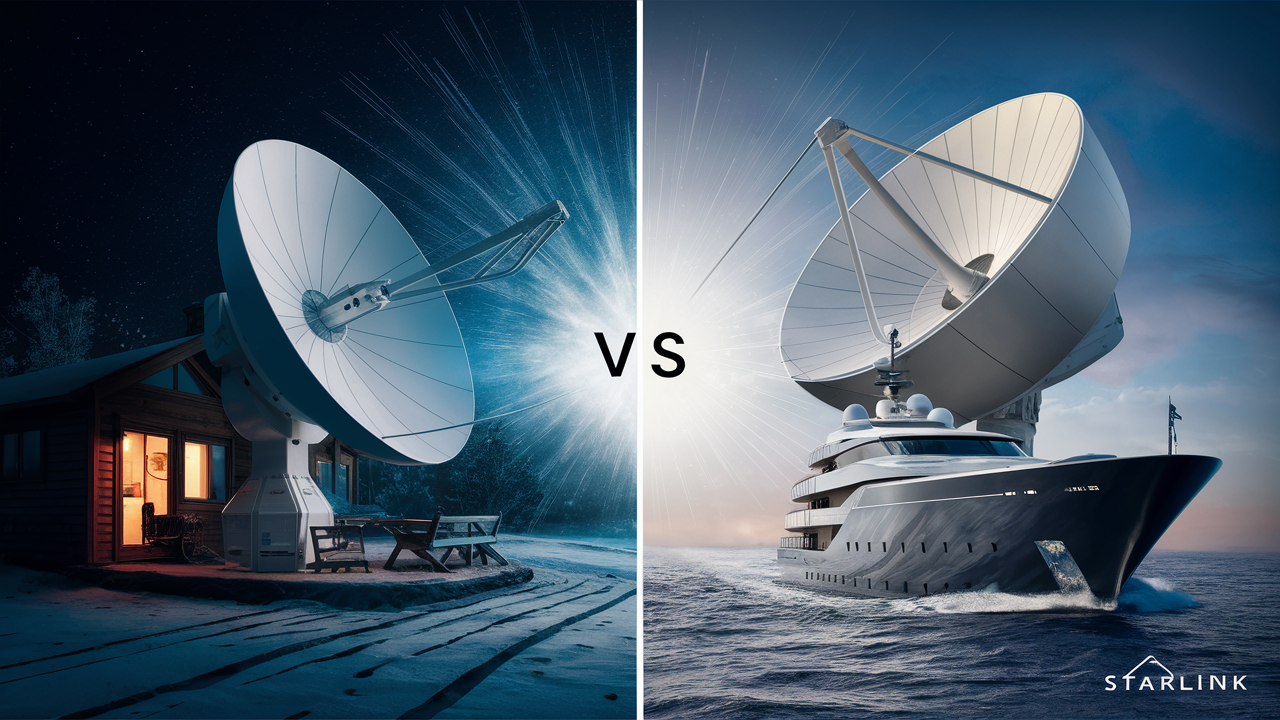When you sign up for Viasat satellite internet, understanding the equipment and cabling involved is important, especially for installations in rural or remote areas. One of the most common questions is: What kind of cable does Viasat use? In this comprehensive guide, we’ll explain the specific type of cable required for Viasat installations, why it matters, and what you need to know about Viasat’s cabling standards.
Viasat Cable Overview
Viasat satellite internet systems use coaxial cable to connect the outdoor satellite dish (also known as the ODU, or Outdoor Unit) to the indoor modem (IDU, or Indoor Unit). This cable carries both the signal from your home to the satellite (transmit, or TX) and from the satellite to your home (receive, or RX).
Key Fact: Viasat installations require a single length of high-quality, Viasat-approved coaxial cable for both transmitting and receiving signals[1][6].
Detailed Cable Specifications
Viasat has strict requirements for the coaxial cable used in its installations. Here’s a breakdown of the key specifications:
- Cable Type: High Speed, RG-6, 3.0 GHz, 75 Ohm, solid copper coaxial cable.
- Center Conductor: 18 AWG solid bare copper (not copper-clad steel).
- Dielectric: Foam polyethylene.
- Shield: Foil (aluminum/poly tape) and braid (34 AWG aluminum, 60% coverage).
- Jacket: PVC (indoor) or PE (outdoor).
- Impedance: 75 ohms (±3 ohms).
- Maximum Length: 150 feet (45.72 meters).
- Maximum Bend Radius: 6 inches (loaded), 3 inches (unloaded) — never put a 90-degree bend in the cable.
- Connectors: F-type compression connectors, fully weather-sealed.
Why These Specifications Matter
Viasat’s strict cable requirements ensure reliable signal transmission and minimize interference. Using the wrong type of cable, such as copper-clad steel (CCS) instead of solid copper, can lead to poor performance, signal loss, and service failures, even if it initially appears to work.
Weatherproofing is also critical. All outdoor connections must use compression connectors that are fully weather-sealed to protect against moisture, which can degrade signal quality over time.
Viasat-Approved Cable Models
Viasat maintains a list of approved coaxial cable models that meet or exceed its technical specifications. Technicians are required to use only these approved cables for all installations. The cable must have the following information printed on it:
- Frequency
- RG number
- Copper type
- Impedance
Using unapproved or substandard cable can void your warranty and may require a technician to return and replace the cable at your expense[6].
Installation Requirements
Proper installation is just as important as using the right cable. Here are the main requirements for Viasat coaxial cable installations:
- Single Cable Run: One length of cable is used for both transmit (TX) and receive (RX) paths.
- Maximum Length: The cable run must not exceed 150 feet from the outdoor unit to the modem.
- Connectors: All connectors must be F-type compression and fully weather-sealed[1][6].
- Weatherproofing: Use silicone weather sealant to seal the hole where the cable enters your home.
- No Sharp Bends: Never put a 90-degree bend in the cable run; maintain a gentle curve with a minimum bend radius.
Mechanical and Electrical Properties
Viasat’s coaxial cable is designed to withstand a wide range of environmental conditions while maintaining excellent electrical performance:
| Property | Specification |
|---|---|
| Center Conductor | 18 AWG solid bare copper |
| Shield | Foil: Aluminum/Poly Tape Braid: 34 AWG Aluminum, 60% coverage |
| Dielectric | Foam polyethylene |
| Jacket | PVC (indoor) or PE (outdoor) |
| Impedance | 75 ohms (±3 ohms) |
| Maximum Length | 150 feet |
| Maximum Bend Radius | 6 inches (loaded), 3 inches (unloaded) |
| Temperature Rating | Up to 75°C (167°F), cold bend to -40°C (PVC) or -55°C (PE) |
| Fire Rating | CM or CMX |
| Dielectric Strength | 3000 VDC (conductor to shield) |
| Velocity of Propagation | 82% |
Why Solid Copper Matters
Viasat requires the center conductor of the coaxial cable to be 100% solid copper, not copper-clad steel. Copper-clad steel (CCS) cables may appear to work at first, but they often lead to service failures and poor performance over time. Solid copper provides better conductivity and reliability, ensuring your Viasat system operates at peak efficiency.
Connector Requirements
The connectors used on Viasat coaxial cables must be F-type compression connectors that are fully weather-sealed. This prevents moisture from entering the connection, which can cause signal loss and corrosion.
- Type: F-type compression
- Sealing: Fully weather-sealed
- Installation: Tighten with a 30-inch/pound torque wrench to prevent over-tightening and ensure a secure, moisture-proof connection.
Installation Best Practices
To ensure a reliable Viasat installation, follow these best practices:
- Use Only Approved Cable: Always use Viasat-approved RG-6, 3.0 GHz, 75 Ohm, solid copper coaxial cable.
- Check Cable Length: Do not exceed 150 feet from the outdoor unit to the modem.
- Use Proper Connectors: Install F-type compression connectors that are fully weather-sealed.
- Weatherproof the Installation: Seal all outdoor connections and entry points with silicone weather sealant.
- Avoid Sharp Bends: Maintain a gentle curve with a minimum bend radius; never put a 90-degree bend in the cable.
- Label the Cable: Ensure the cable is labeled with its specifications (frequency, RG number, copper type, impedance).
Common Mistakes to Avoid
Here are some common mistakes that can affect your Viasat installation:
- Using Copper-Clad Steel (CCS) Cable: CCS cables are not approved and can cause service failures.
- Exceeding Maximum Cable Length: Longer cable runs can cause signal loss and voltage drop.
- Poor Connector Installation: Loose or unsealed connectors can let in moisture and degrade performance.
- Sharp Bends: Bending the cable too sharply can damage the internal conductors and cause signal loss.
Frequently Asked Questions
What type of cable does Viasat use?
Viasat uses high-speed, RG-6, 3.0 GHz, 75-ohm, solid copper coaxial cable for all installations.
How long can the Viasat cable be?
The maximum cable length is 150 feet (45.72 meters) from the outdoor unit to the modem.
What kind of connectors does Viasat use?
Viasat requires F-type compression connectors that are fully weather-sealed.
Can I use copper-clad steel cable for Viasat?
No, Viasat requires 100% solid copper center conductor cable. Copper-clad steel is not approved and can cause service failures.
Who installs the Viasat cable?
A certified Viasat technician will install the cable and ensure it meets all specifications.
Conclusion
Viasat satellite internet installations require a specific type of coaxial cable: high-speed, RG-6, 3.0 GHz, 75 Ohm, solid copper. This cable must be properly installed with weather-sealed F-type compression connectors and should not exceed 150 feet in length. Following these requirements ensures reliable signal transmission, optimal performance, and long-term satisfaction with your Viasat service.





